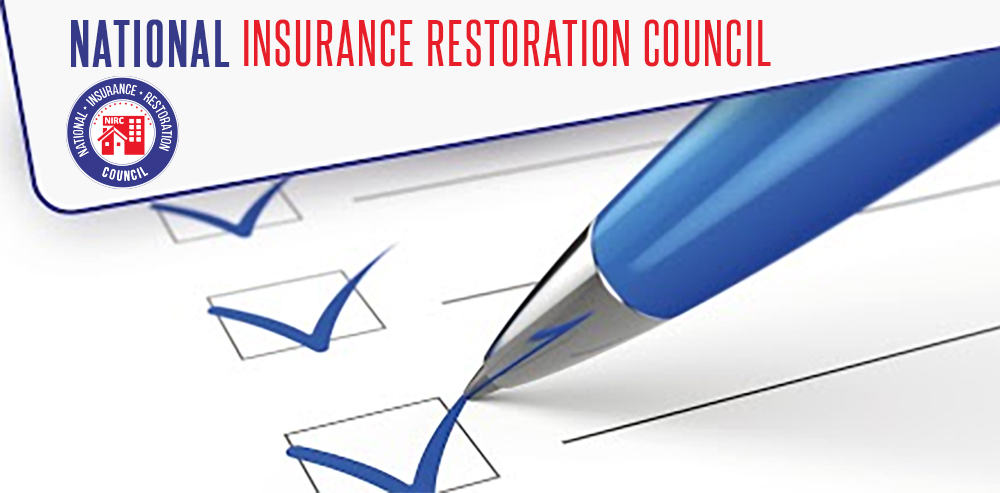15 Rules for Reading and Understanding Your Insurance Policy
- Ascertain Who Qualifies as Insured
- Annotate the Policy Form
- Confirm all Forms and Endorsements are Attached
- Read the Insuring Agreement First
- Read the Exclusions
- Read the Exceptions to the Exclusions
- When the Policy Refers to Another Section, Read That Section Immediately
- Pay Attention to the Conjunctions Used In A List
- Pay Attention To Keywords and Phrases
- Read and Understand the Definitions of Specifically Defined Terms
- Understand and Make Sure all the Policy Conditions Have Been Met
- Confirm the Coverage Limits are Adequate for the Loss
- Make Sure you DO NOT Have a Wind or Hail Exclusion
- Make Sure you DO NOT Have Ordinance and Law Coverages
- Make Sure Your Policy is and RCV Policy
What Are Supplements?
You may have heard your insurance restoration contractor use the term “Supplements” when they are reviewing your insurance scope of work or during the restoration process. This term can seem confusing to those outside the insurance restoration industry.
If you have ever been involved in a remodeling project you might have heard the term ” Change Order” used by your contractor when a change is made in the original contract that was entered into for the project.
Unlike a retail remodeling project such as a kitchen remodel or an addition to your property, where a contractor reviews the project and gives you a price for the project, insurance estimates are first written by an insurance company claims adjuster. Often, after a large storm event and even during their daily claims handling of wind, fire, water or mold, adjusters will be very busy and have a very small window of time to inspect a property. A lot of adjusters that are performing inspections for damages at your property have little to no construction experience which also leads to items being missed on the original estimate that have been prepared by the insurance company. The Supplement estimate prepared by your NIRC Certified Contractor is how you bring these additional items to the attention of the Insurance Company.
- The Supplement process involves a contractor preparing an estimate utilizing the same estimation software that is utilized by the insurance company adding the appropriate and necessary line items that the insurance company left of their original estimate to achieve a fair market price to perform the repairs needed to restore your property.
- The cost of the additional work is agreed on between your insurance company and your contractor before the work commences.
- One of the key items that your contractor should be knowledgeable on is the building code requirements that need to be included in the insurance estimate for repairs. Any work that is completed needs to be done to the requirements enforced by the local building departments. Most of the supplementing process revolves around addressing building code requirements and building processes missed by the insurance companies’ adjusters. Building codes vary from state to state and out of state adjusters may not be familiar with the code requirements that need to be included to reach the local standards of construction.
- The other problem is that insurance companies have been proven to purposely omit certain line items, use incorrect city price guides and not honor customary charges, such as the contractor’s overhead and profit on a project to devalue an estimate for repairs needed to do the job correctly and return you to a pre-loss condition.
- A Certified NIRC Contractor will be able to spot the missing items and bring them to the insurance companies attention. Depending on the complexity of the supplement, due to the items left off by the insurance company in their estimate for repairs, this process may add a few days to a few weeks before resolution is achieved. Although this slows down the building process for everyone, it is the difference between a project that is done the RIGHT WAY and your property being fully RESTORED, and a project that not all items have been fixed the correct way.
Protecting the Property Owner: The Art of Successful Supplements
The art of successful supplements is more than simply writing an estimate. It is in the presentation, the follow-up, the educated conversations that your contractor has with the insurance company.
It is also timing, when the supplement is sent, at which stage of the restoration the supplement is submitted. It is very important that the customer supports their contractor. The insurance company is very skilled at driving a wedge between the contractor and their customers to prevent supplements from being approved.
What supplements accomplishes is the ability to get a proper estimate for repairs needed to restore the property to a pre-loss condition. One that realistically takes into account all the damages and allows for a fair market price to cover the costs of the repairs, and allows for a quality job that you are entitled to per your insurance policy.










